Madrid , 2018
THE WALKING CEILING
A glass plate, measuring 2 by 3 meters, is placed over the heads of professional women from Madrid, whom Framis has asked to help her carry it through the streets of the city.
What is the future of young women in their twenties? About 60% of university graduates are women, but only 3% will reach management-level positions. What are the skills required by these high-responsibility posts that women still do not possess? What is the existing business leadership model that women are seemingly unable to attain? Will we be able to design a form of leadership in which women can compete on equal footing with men? It looks like the role of top executives is designed for men and not for women. This is why I defend a new design of leadership power which will not exclude access to women.
According to the US Federal Glass Ceiling Commission, set up to work towards greater social justice and to improve the country’s economy, at the moment women are obstructed from reaching posts that entail greater responsibility and, at once, greater profits to share out. Another form of inequality, according to the Comisiones Obreras trade union, is that women have to work 109 days more than men to earn the same salary, in other words, three months more per year.
The glass ceiling—an expression used for the first time in 1978—is artificial, it is an invisible barrier in women’s professional careers. The invisible glass curtails and limits women’s aspirations and opportunities. Now, in 2018, forty years after the coining of the expression Glass Ceiling, what has actually changed for women over the intervening time?
For Sala Alcalá 31, I would like to carry out a performance that involves the city. Passers-by can join in a silent protest or be mere spectators. The material I am going to use is glass and the reflections it produces, the element par excellence in big cities. A glass plate, measuring 2 by 3 metres, will be placed over the heads of professional women from Madrid, who I have asked to help me to carry it through the streets of the city. The plate will be supported using a piece of padded cloth or silicone, so that glass does not slip and also to cushion vibrations. The movement of the glass plate through the city, carried by these women, is silent yet also aggressive. The action is part of my search for new, truly feminine ways for women to protest, though without imitating masculine attitudes or symbols.
I believe that, contrary to what it might seem at first sight, silence and the movement of women in step with gloved-covered hands could provoke a liberating effect from latent oppression.
It is worth underscoring my experience when speaking about Glass Ceiling with assistants or students, because they, of course, with the innocence of youth, still do not know what it is and are still unaware of what the future holds in store for them, if we do not change something for them. That is why this performance is aimed at young women, so that they prepare themselves and act in consequence; and also, of course, at older generations, among which I count myself, who would have wished that we could have broken this inequality at work. Right now I can break this ceiling but it keeps coming back like weeds in a garden.
A glass plate is once again used as the clear metaphor for the position of women in society. This time defending a new design of leadership power, which will not exclude access to women.
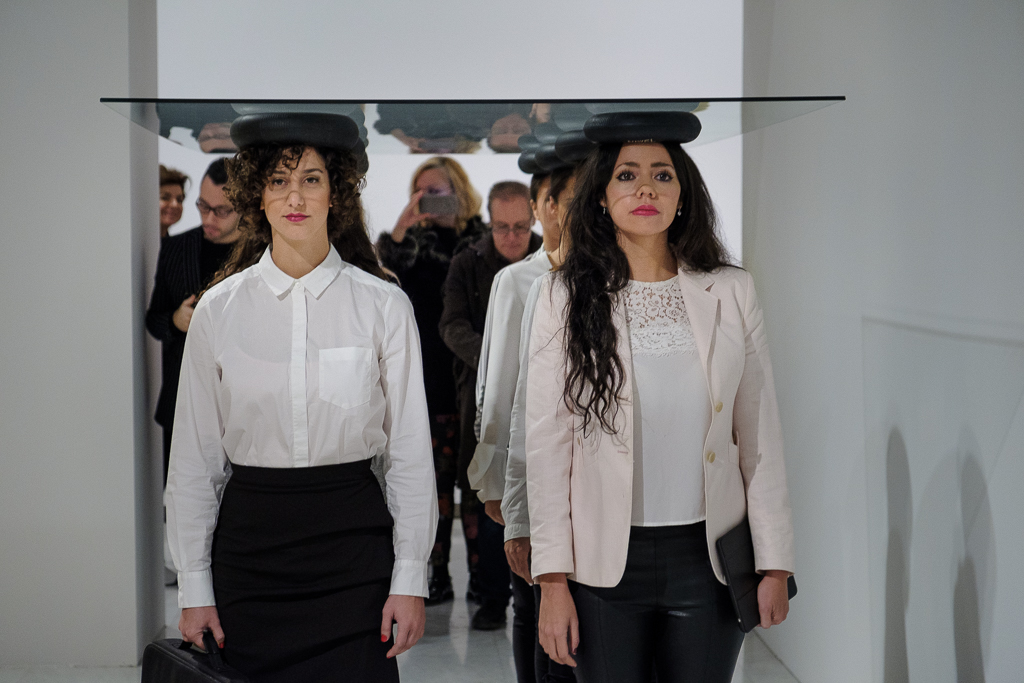

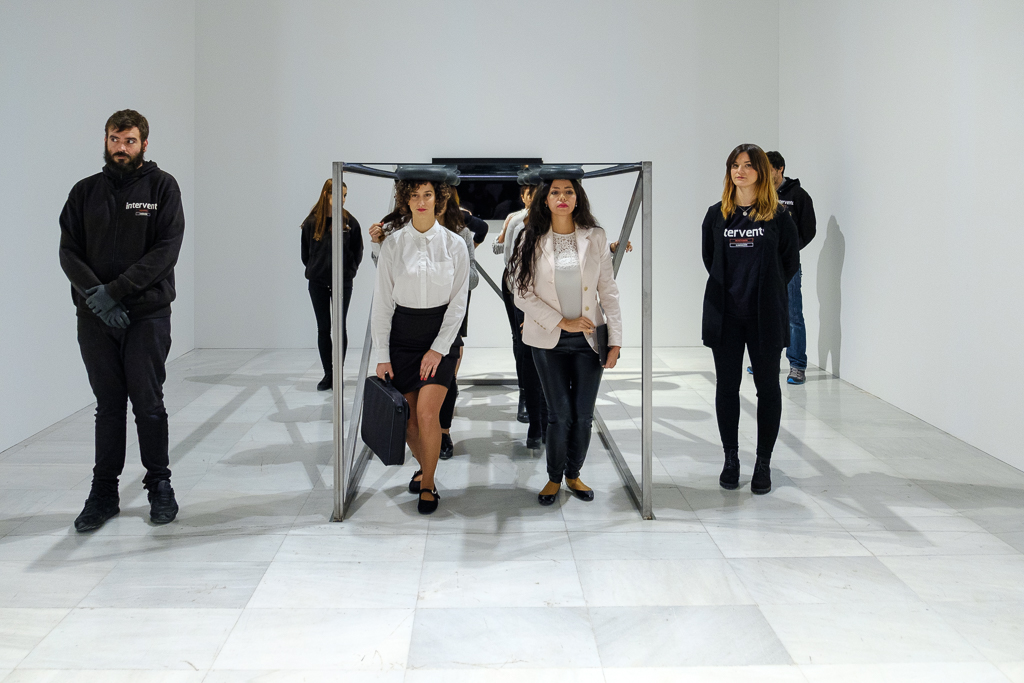
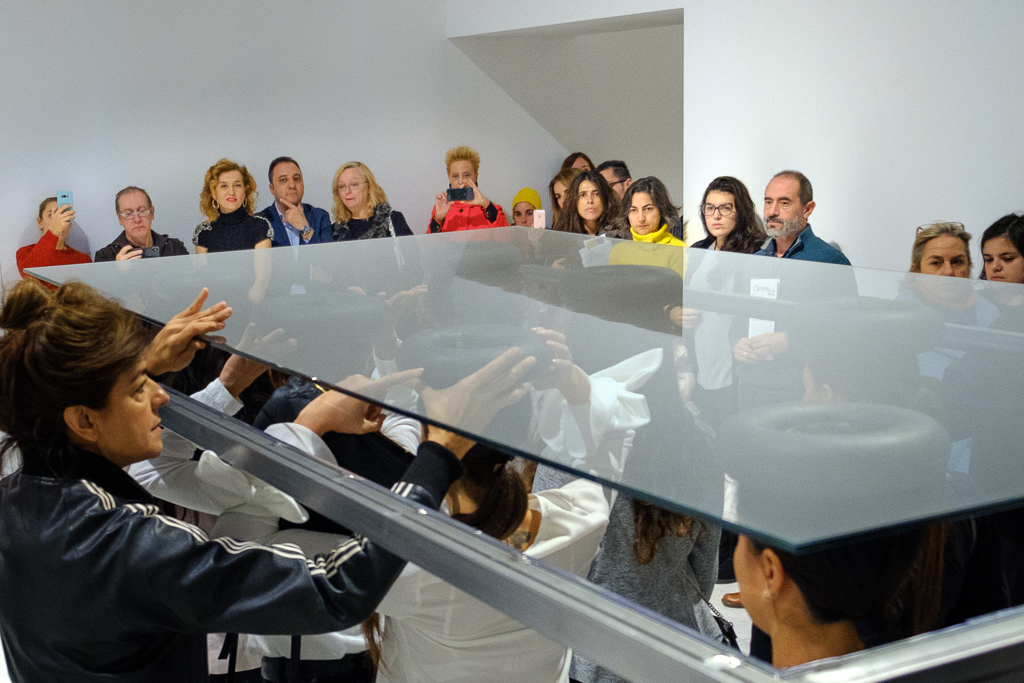
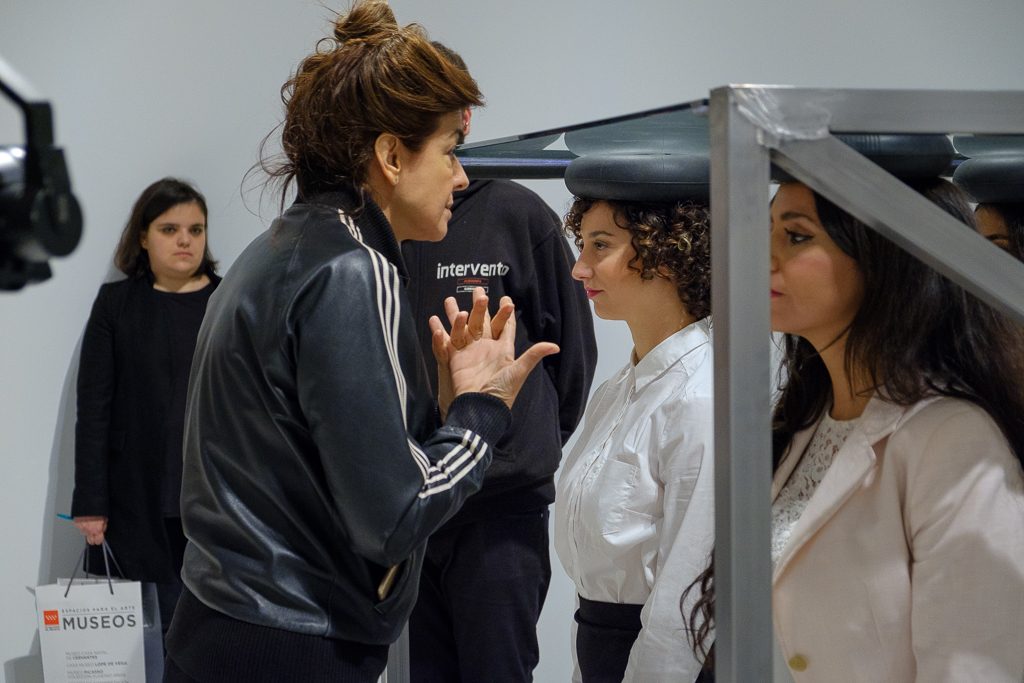
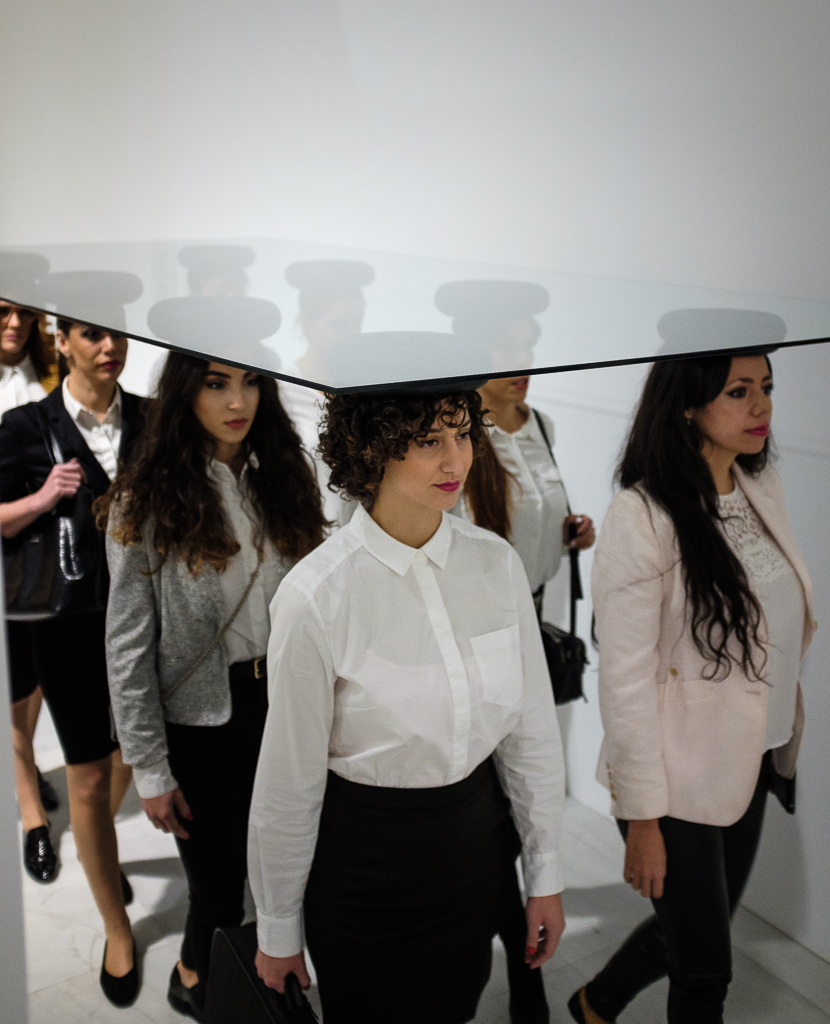
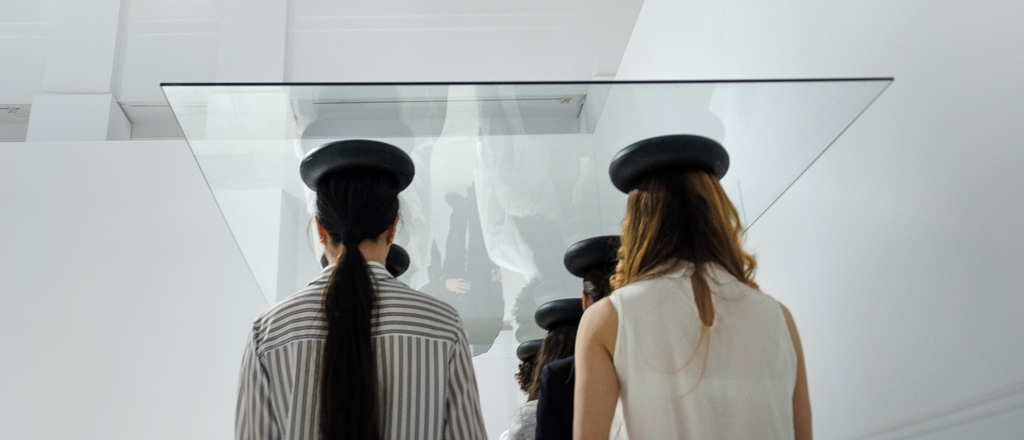
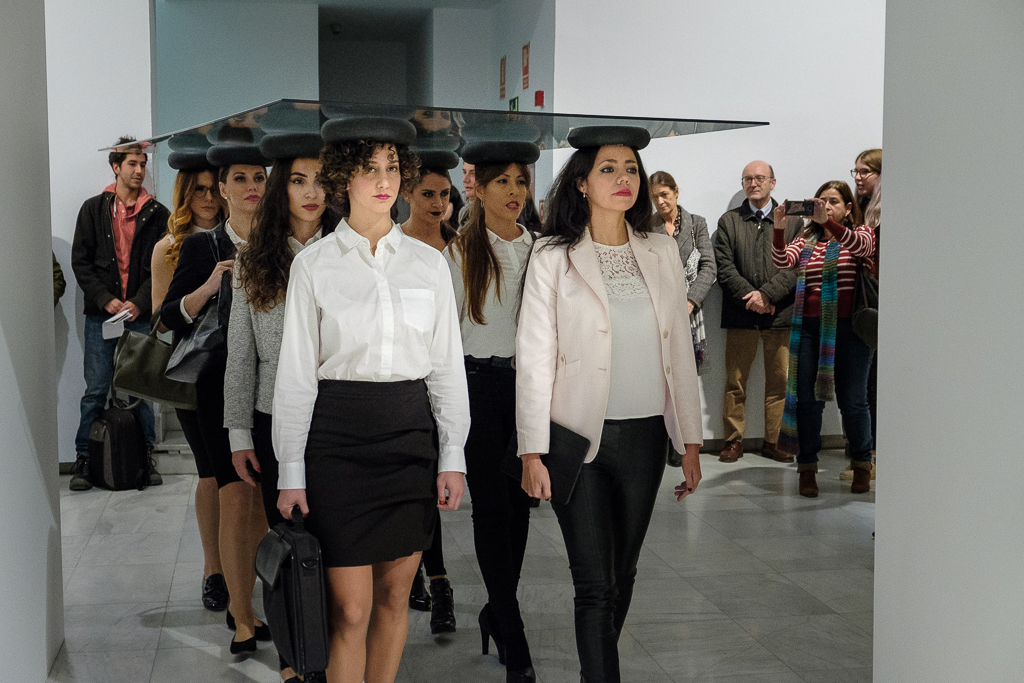
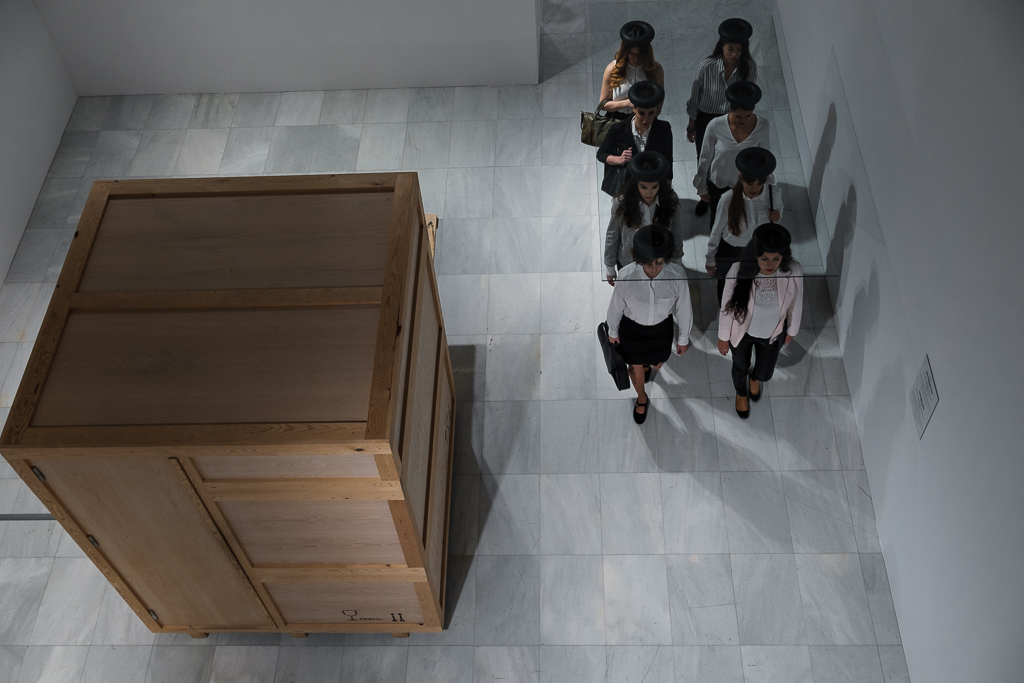
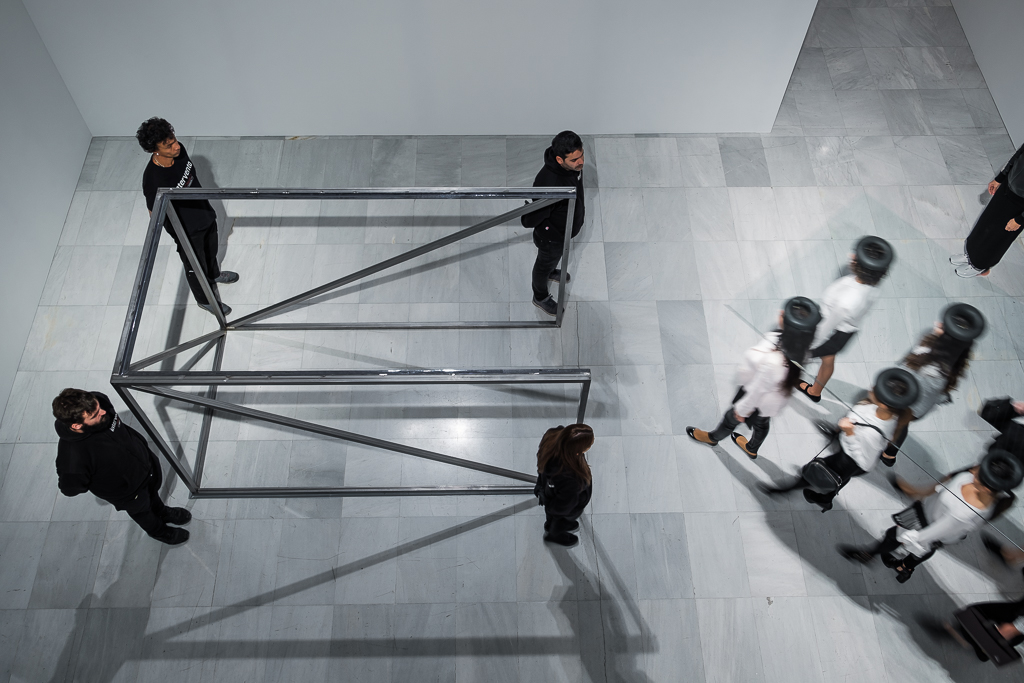
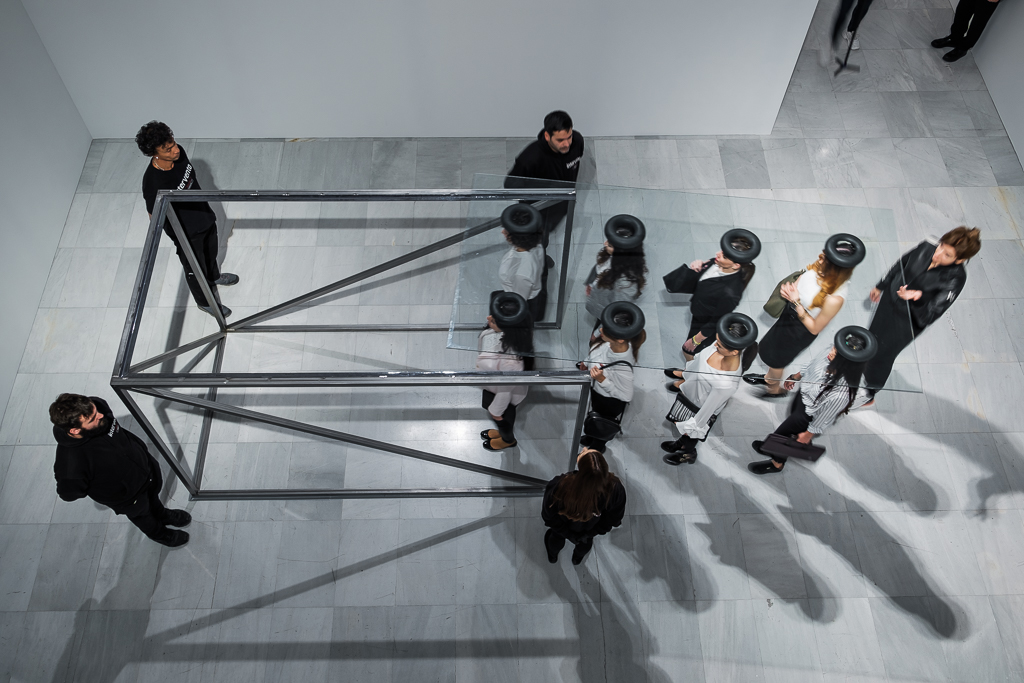
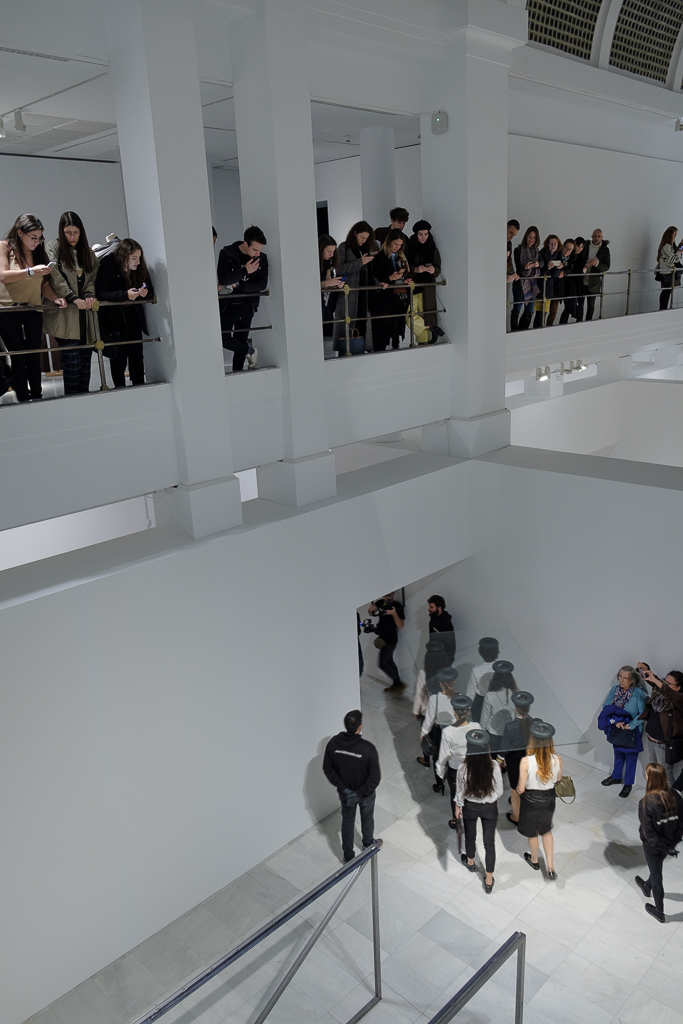
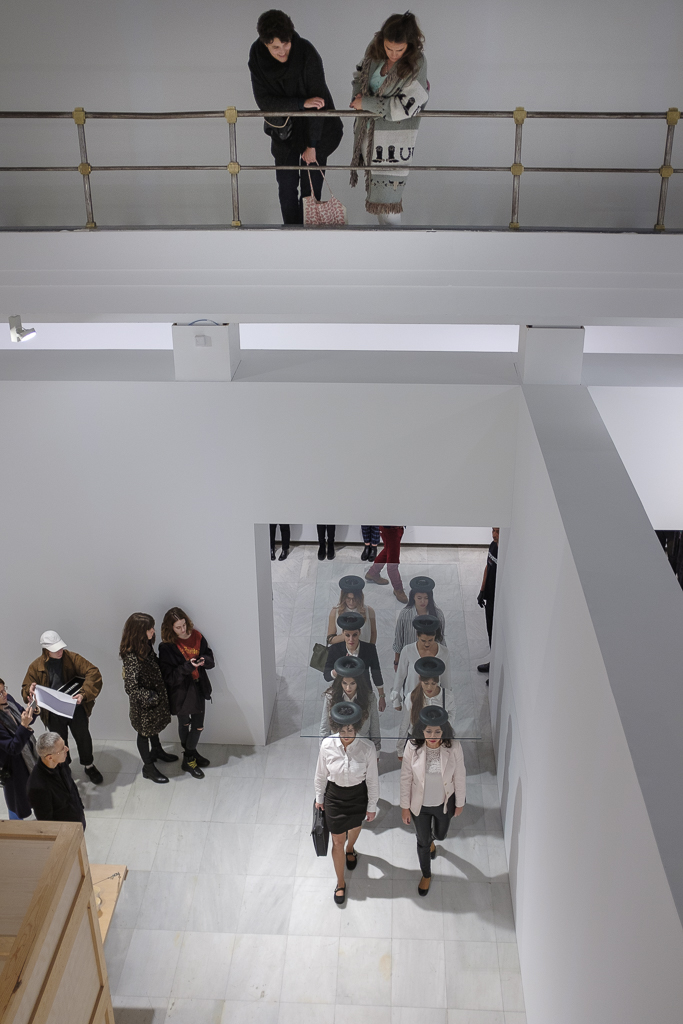
What is the future of young women in their twenties? About 60% of university graduates are women, but only 3% will reach management-level positions. What are the skills required by these high-responsibility posts that women still do not possess? What is the existing business leadership model that women are seemingly unable to attain? Will we be able to design a form of leadership in which women can compete on equal footing with men? It looks like the role of top executives is designed for men and not for women. This is why I defend a new design of leadership power which will not exclude access to women.
According to the US Federal Glass Ceiling Commission, set up to work towards greater social justice and to improve the country’s economy, at the moment women are obstructed from reaching posts that entail greater responsibility and, at once, greater profits to share out. Another form of inequality, according to the Comisiones Obreras trade union, is that women have to work 109 days more than men to earn the same salary, in other words, three months more per year.
The glass ceiling—an expression used for the first time in 1978—is artificial, it is an invisible barrier in women’s professional careers. The invisible glass curtails and limits women’s aspirations and opportunities. Now, in 2018, forty years after the coining of the expression Glass Ceiling, what has actually changed for women over the intervening time?
For Sala Alcalá 31, I would like to carry out a performance that involves the city. Passers-by can join in a silent protest or be mere spectators. The material I am going to use is glass and the reflections it produces, the element par excellence in big cities. A glass plate, measuring 2 by 3 metres, will be placed over the heads of professional women from Madrid, who I have asked to help me to carry it through the streets of the city. The plate will be supported using a piece of padded cloth or silicone, so that glass does not slip and also to cushion vibrations. The movement of the glass plate through the city, carried by these women, is silent yet also aggressive. The action is part of my search for new, truly feminine ways for women to protest, though without imitating masculine attitudes or symbols.
I believe that, contrary to what it might seem at first sight, silence and the movement of women in step with gloved-covered hands could provoke a liberating effect from latent oppression.
It is worth underscoring my experience when speaking about Glass Ceiling with assistants or students, because they, of course, with the innocence of youth, still do not know what it is and are still unaware of what the future holds in store for them, if we do not change something for them. That is why this performance is aimed at young women, so that they prepare themselves and act in consequence; and also, of course, at older generations, among which I count myself, who would have wished that we could have broken this inequality at work. Right now I can break this ceiling but it keeps coming back like weeds in a garden.
A glass plate is once again used as the clear metaphor for the position of women in society. This time defending a new design of leadership power, which will not exclude access to women.